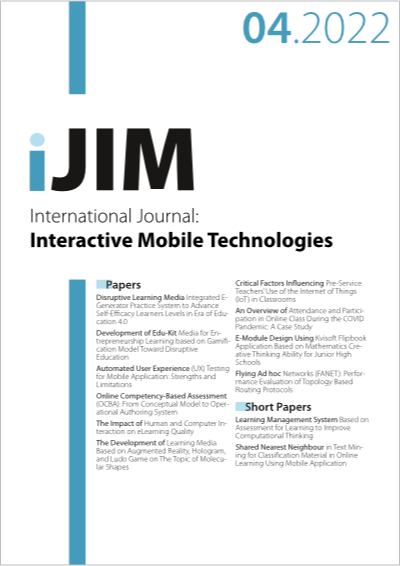Flying Ad hoc Networks (FANET): Performance Evaluation of Topology Based Routing Protocols
DOI:
https://doi.org/10.3991/ijim.v16i04.28235Keywords:
Multi-UAV, Flying ad hoc Networks, Topology-Based Routing Protocol, Gauss Markov, Flying Altitude,Abstract
Flying Ad hoc Networks (FANETs) has developed as an innovative technology for access places without permanent infrastructure. This emerging form of networking is construct of flying nodes known as unmanned aerial vehicles (UAVs) that fly at a fast rate of speed, causing frequent changes in the network topology and connection failures. As a result, there is no dedicated FANET routing protocol that enables effective communication between these devices. The purpose of this paper is to evaluate the performance of the category of topology-based routing protocols in the FANET. In a surveillance system involving video traffic, four routing protocols with varying routing mechanisms were examined. Additionally, simulation experiments conducted to determine the influence of flying altitude. The results indicate that hybrid routing protocols outperform other types of protocols in terms of average throughput. Proactive protocols, on the other hand, have the least jitter.
Downloads
Published
2022-02-28
How to Cite
Wheeb, A. H. (2022). Flying Ad hoc Networks (FANET): Performance Evaluation of Topology Based Routing Protocols. International Journal of Interactive Mobile Technologies (iJIM), 16(04), pp. 137–149. https://doi.org/10.3991/ijim.v16i04.28235
Issue
Section
Papers
License
Copyright (c) 2022 Ali Hussein Wheeb

This work is licensed under a Creative Commons Attribution 4.0 International License.


